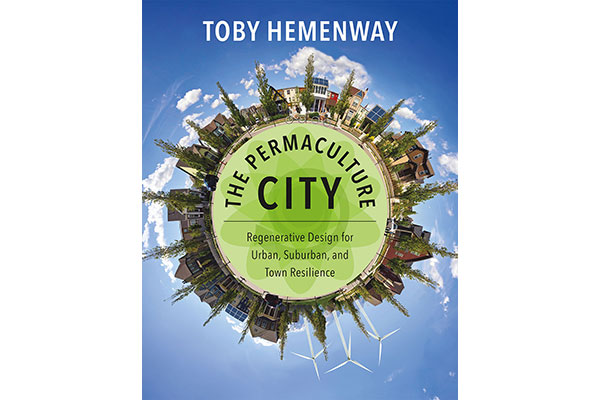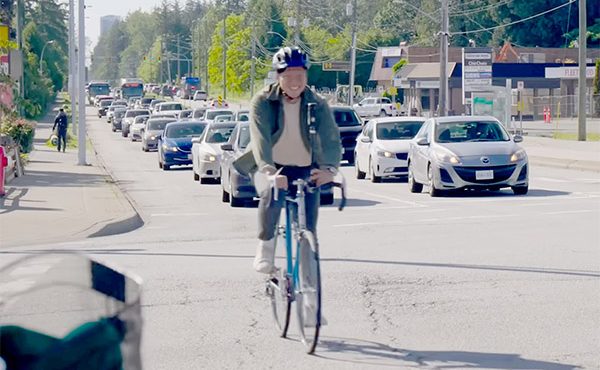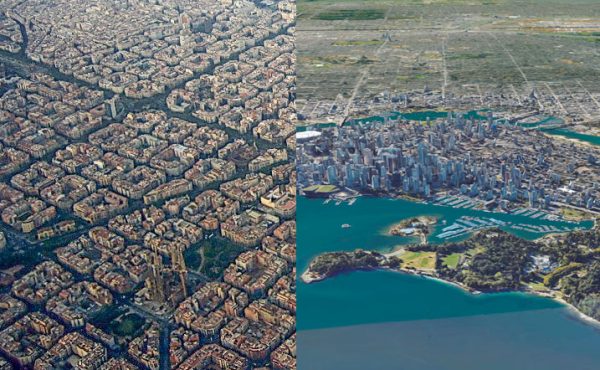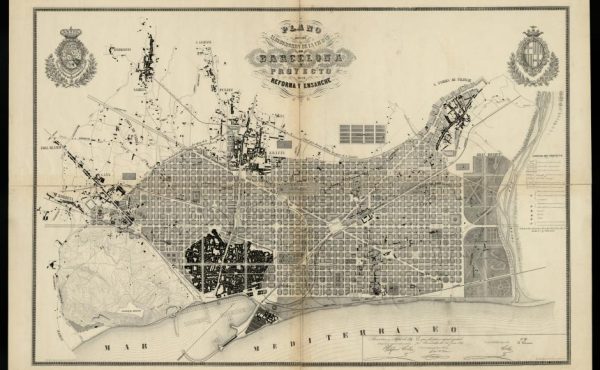
Author: Toby Hemenway (Chelsea Green Publishing, 2015)
In the 1970s Australian biologist Bill Mollison and ecological designer David Holmgren were looking for a practical approach for agriculture. They were trying to find a solution to their question: Why is agriculture not planned around nature? Out of these efforts they published the book Permaculture in 1978 that has now become a movement on sustainable living by using the design principles of permaculture.
The term permaculture is derived from “permanent culture” and emerged in the 1960s as a field for solutions in agricultural systems for human settlements. It has come a long way since its initial years. There is now an eponymous documentary by Australian company Dogs Go Woof Productions featuring the founders/ initiators of Permaculture, the late Bill Mollison and David Holmgren.
Originally catered to the world of farming and gardening, permaculture upped the ante to urbanism as a whole—expanding to the realm of software design, community organization, water, waste and energy engineering, and even yoga. According to a study by the United Nations as of 2018, over half of the global population (55%) lives in urban areas. This number is expected to increase to 68% by 2050.
Locally, as of 2020, Canada’s urban population is 30.670 Million and is projected to grow to 39.234 million by 2030. With the surge of urbanism, humans are facing growing challenges such as food security, housing, energy consumption, transportation, and healthcare. As such, new policy and planning guidelines for sustainable and inclusive urbanization are key to meet the demands of our century.
It is with this in mind that Toby Hemenway’s book, The Permaculture City, looks at the tools and outcomes of permaculture cities in North America with the aim to build resilient, livable, and inclusive societies.
On the first page of his introduction, Hemenway clarifies: “Urban permaculture is only slightly about gardening, and mostly about people, […] takes what we have learned in the garden and applies it to a much broader range of human experience.” (xi)
- How urban and suburban life can be enhanced through design and repurposed.
- How citizens can learn to lead a more resilient and engaged life with the natural world.
The first seven chapters of Hemenway’s book focus on the physical aspects of permaculture, such as strategies for gardens in a community, design techniques and strategies for the urban home garden, energy sources and water.
Food is a major theme throughout the book, which touches on a very timely and pertinent topic. The global and national statistics on food loss are grim: In 2011 a report by FAO suggested that 30% of the world’s food was wasted or lost. In terms of economic value, around 14 % of food produced in the world is lost from post-harvest up to, but not including, the retail level.
In Canada, nearly 60 percent of the national food produced—amounting to 35.5 million metric tonnes—is lost and wasted annually. Of that, 32 percent—equalling 11.2 million metric tonnes of lost food—is avoidable and is edible food that could be redirected to support people in our communities. The total financial value of this potentially rescuable lost and wasted food is a staggering $49.46 billion.
With that in mind, in Chapter 1: The Surprisingly Green City, Hemenway asks whether food growing is “an essential function for cities?” noticing that cities have always relied on their surrounding regions for much of their food and other raw materials. Giving historical examples of prosperous countrysides in China and Göbekli Tepe, he suggests that urban food growing is a “bonus feature of a vibrant city.”
In the fifth chapter entitled Strategies for Gardening in Community, Hemenway explores the topic of food processing, distribution, and sourcing in-depth. He explains that “permaculture thinking can help us identify and regorge the weak links in how we obtain our food.” More particularly, he applies five “Foodshed Zones” to help meet our food needs.
- Zone 1: This Zone references to Chapters 3 and 4. The latter has a well-defined table “The Thirty Most Valuable Plants For Urban and Suburban Yards“. The focus is on people’s own gardens and backyards. Here, Hemenway gives examples of designing one’s own garden using techniques such as stacking plants vertically or planting in compact patterns, as well as how to use sun and shade to grow specific plants.
- Zone 2: Makes suggestions on how to grow your own food by using nearby gardens, such as community gardens and schoolyards. This zone is particularly interesting for those who live in the city in condominiums or apartment buildings with no backyard.
- Zone 3: Looks into sourcing fresh home-grown food at farmer’s markets, which Hemenway calls a “benevolent reinforcing feedback loop that builds local resilience.”
- Zone 4: This is one step further from the farmers market, suggesting to buy food from locally-owned supermarkets, although he warns that this is something that should be rarely visited.
- Zone 5: This would be the last resort for sourcing food, including large chains and big-box stores.
The overall benefits of the foodshed zone system expand beyond the realm of food-sourcing. They also reduce one’s carbon footprint, allow for self self-sufficiency in food sourcing, and foster interaction and community. The latter is a topic dealt with in Chapter 9 “Placemaking and the Empowered Community“, where Hemenway examines the concepts of three key contributors to livable cities and placemaking: Jane Jacobs, Kevin Lynch and William Whyte.




